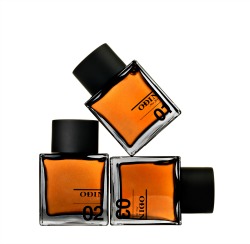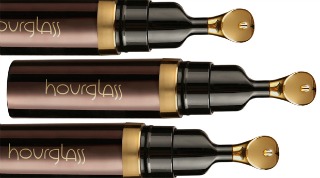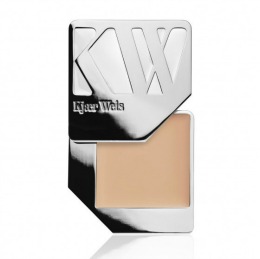
2014-03-28 23:44:31
Macro to Micro
2014-03-28 23:44:31
By Kelly Kovack
|
|
The following trends are not so much predictions, but rather opportunities, identified for innovation and creativity in packaging driven by shifts in consumer thinking, market segments and product forms.
Given the product to market lead time for the beauty category, it is important to look at both short term opportunities that capitalize on trends articulated through deco or secondary packaging, as well as, long term innovation related to technology and industrial design.
THE NICHE FRAGRANCE MARKET MATURES
The niche fragrance market has gone from editorially exciting to lucrative for retailers that made an early commitment to these brands.
There are two key factors driving this maturation that will in turn, drive innovation in both packaging and delivery systems. The first being that the early entrepreneurial brands like Byredo,

A NICHE FRAGRANCE BRAND: Odin New York uses elegant square bottles.
La Labo, Frédéric Malle and Odin New York have evolved from start-ups with limited sku count and distribution to serious businesses with global footprints.
The second factor being the increased demand from consumers, at least at prestige, for a more artisanal approach to fragrance has increased retailer commitments to the category.
Niche brands have been pushing the envelope and creating olfactive trends for years. As these brands come into their own, we are beginning to see this creativity expand into delivery systems and packaging. This presents an opportunity for packaging suppliers with blue-sky ideas to commercialize them by partnering with these brands that love taking risks.
THE SMART STOCK SOLUTION
Every packaging exploration begins with the same question, stock or custom. Usually, the decision for most brands is driven, not by the desire to use stock components but rather the budgets and minimums associated with custom packaging.
We’ve all spend endless hours searching packaging catalogs looking for that needle in a haystack – some stock packaging no one is using yet an in the end we usually go back to trying to figure out how to make the basics look intentional or new. At the end of the day, a Boston round is a boston round regardless of how creative the deco.
I have my own ways of navigating this conundrum. A handful of packaging companies are finally finding ways to bridge the divide between stock and custom through innovative hybrid offerings. Working closely with these vendors allows small to medium size brands the ability to achieve a custom componentry without the prohibitive cost and minimums.
THE LIPSTICK FACTOR IS BACK
In the past several years, the lip category has taken a back seat to the nail phenomenon, but indicators from last quarter show that nails
|
|
may have hit their saturation point. Retailers are over assorted, and
|
|
the category is flooded with products ranging from big brands to niche players, and everything in between.
This fact coupled with the bold lips that seem to be making their way from the runway streets indicates a resurgence of lips.
Consumer demand for performance-based products has resulted in the development of hybrid lip formulas. These high-tech products will drive packaging development that supports new technology and are reflective of the positioning.
The articulation of this will emerge through new methods of application, which is an opportunity to differentiate for brands and crucial to positive usage experience by the consumer. The doe foot applicator is simply just not going to cut it for these high-tech formulas.
THE SUSTAINING OF SUSTAINABLITY
Sustainability continues to be important to consumers, but they also want it to be easy, which results in them holding brands and retailers to a higher standard than themselves. Consumers have come to expect green characteristics in the products they buy and how they are packaged, but they are less willing to pay for these premium elements.
As sustainable packaging has become an expectation, it no longer differentiates brands making it difficult to justify the expense unless it is requisite because of a brand's positioning. This shift has also necessitated an increase in transparency, driven by consumers’ skepticism of the claims made not only about their products, but packaging and manufacturing methods. This distrust demands that brands be able to substantiate their claims.
Cumulatively, these changes in consumer behavior require packaging suppliers to continue to innovate with materials and manufacturing in order to provide brands with less expensive, more creative, sustainable options.
LinkedIn







